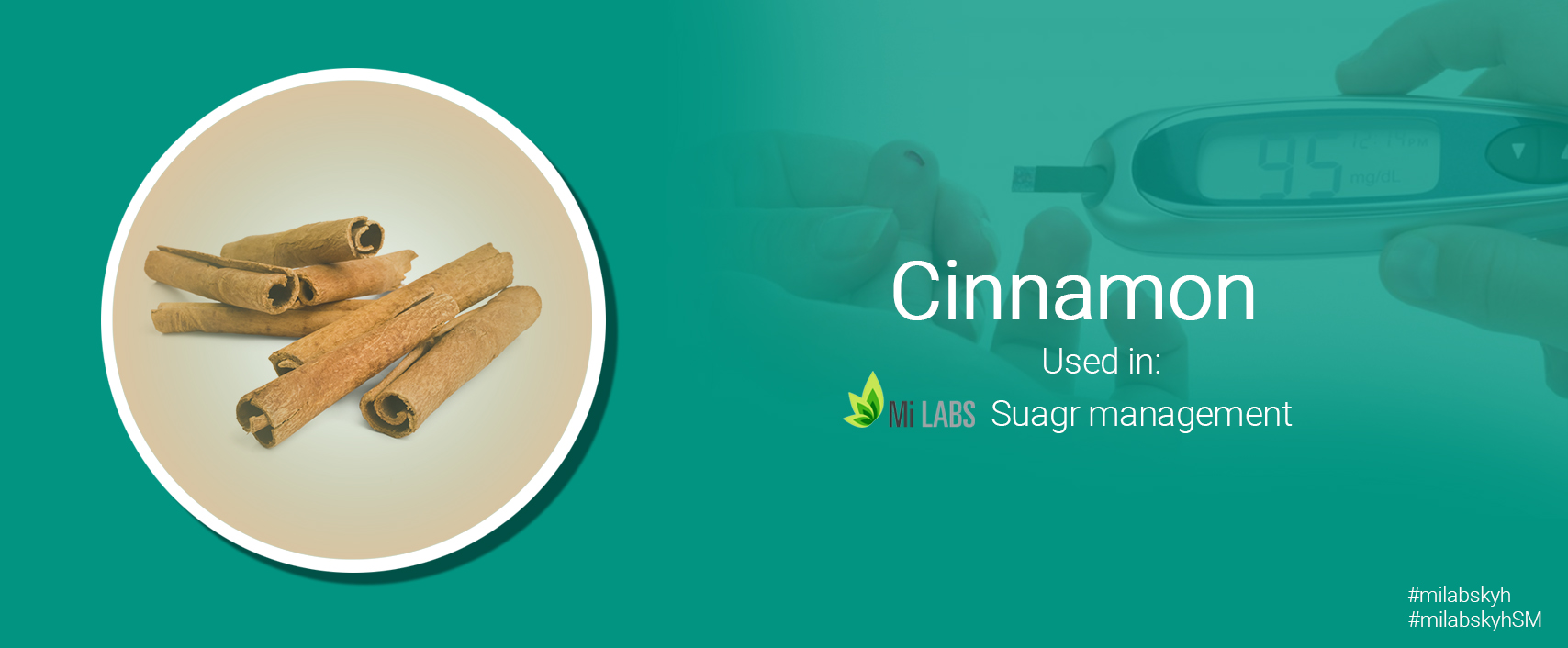

Written By Health Hub
August 10, 2017

Cinnamon is a common spice obtained from the inner bark of tropical evergreen trees belonging to the genus Cinnamomum. Two main varieties of Cinnamomum that are commonly observed are: Cinnamomum zeylanicum (CZ) (also known as Ceylon cinnamon) and Cinnamon cassia (CC) (also known as Chinese cinnamon).
Out of these two varieties of cinnamon, CZ variety has been traditionally used in different cultures for its medicinal properties. Ayurvedic studies suggest Cinnamon to be a remedy for respiratory, digestive and gynaecological ailments. The current research and studies from the western countries have appreciated CZ variety of cinnamon for its anti-inflammatory and anti-microbial properties.
Above all cinnamon has been found to be effective in reducing the blood glucose levels in diabetic patients (Ranasinghe, et al). The polyphenolics present in this commonly used spice can do wonders in reducing blood sugar levels.
The in vitro studies suggest that the Cinnamon extract can potentiate insulin activity. This would trigger the metabolism of sugar and will not allow the sugar to accumulate in blood. Some studies also suggest that Cinnamon can imitate the action of insulin (Ranasinghe, et al).
The proanthocyanidins present in cinnamon prevent in vitro formation of advanced glycation end products. The in vitro studies with CZ also suggest that it reduces the post-prandial intestinal glucose absorption by inhibiting the activity of enzymes like pancreatic α–amylase and α–glucosidase that are involved in carbohydrate metabolism.
GLUT-4 is a molecule present in the cell membrane that helps in the uptake of glucose molecules. Cinnamon triggers the uptake of glucose by GLUT-4 molecules. As a result the cells utilize glucose in greater quantities to produce energy so that glucose does not get accumulated in blood. Cinnamon also triggers the conversion of glucose into glycogen (Ranasinghe, et al).
The in vivo studies with CZ suggest that it increases the circulation of insulin and attenuates weight loss associated with diabetes. In addition, CZ also shows beneficial effects against diabetic neuropathy and nephropathy (Ranasinghe, et al). The Cinnamtannin B1 present in Cinnamon can increase the activity of insulin receptors.
Gluconeogenesis is a metabolic process that stimulates the generation of glucose from non-carbohydrate carbon substrates such as lactate, glycerol, and glucogenic amino acids. Cinnamon inhibits the key regulatory enzymes involved in this process.
A placebo-controlled double-blind trial was conducted to study the efficacy of dried water extract of CC on circulating glucose, lipids, insulin, and insulin resistance. After consumption of this extract for two months, a significant decrease in the fasting glucose levels was noticed along with a decrease in LDL-cholesterol (bad cholesterol) levels (Anderson, et al) (Davis and Yokoyama). An elevation in the insulin sensitivity was also noticed in these subjects.
A total of 79 patients with diagnosed diabetes mellitus type 2 were given cinnamon extract three times a day for 4 months in a double-blind study. The fasting plasma glucose (FBS) levels were tested in these patients and compared with the placebo group. The FBS levels were found to be decreased in these patients (Mang, et al).
A study conducted in 2015, suggests that almost 8 clinical trials have proved the efficacy of Cinnamon. During these trials Cinnamomum cassia was provided in aqueous or powder form to diabetic patients. These studies suggested that Cinnamon was effective in the management of type 2 diabetes (Medagama).
Leave a Comment
Your email address will not be published.